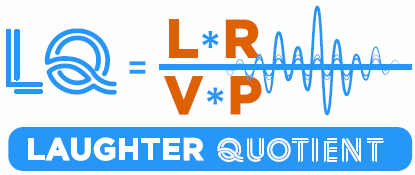
The Science of Laughter
Laughter Therapy uses laughter as a tool to assist in reducing the symptoms of illness, as well as then using laughter to promote good health. It uses a specifically designed Laughter Quotient© that enables people to change their laughter to help identify a better method that helps their healing. It is a treatment modality that uses algorithms to find the best fit.
The Laughter Quotient© was created to take the variable out of laughter. Every research or study that has been done so far, has focused on the stimulus of the laughter, and not the act itself. People have been told to just laugh, and not in any particular way. With the Laughter Quotient©, individuals can play with the variables to find what works best for them.
The Laughter Quotient© is L x R/V x P. L is the length of the laugh which is equivalent to the total volume of air exhaled. The R is the repetition over a designated period. For example, the L may be 3 seconds and the R is 30 in 3 minutes. This equals 90. The V is the volume or loudness of the laugh in decibels. The P is the pitch measured as a frequency. So the decibel level may be 40 and the frequency is 2kHZ. This equals 80. So this LQ is 1.125. So by changing one of the variables we get as close as we can to 1. 1 being the best laugh for this person. When practiced regularly optimum healing and aerobic exercise is experienced.
